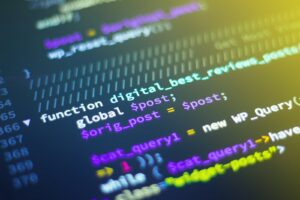The Importance of Detecting Overfitting in Machine Learning
Understanding the Symptoms of Overfitting
Identifying overfitting in machine learning models is critical to ensuring that AI-driven solutions remain accurate and reliable over time. Overfitting occurs when a model learns not only the underlying patterns in the training data but also the noise and random fluctuations. This leads to a model that performs exceptionally well on training data but fails to generalize to new, unseen data, resulting in poor performance when applied in real-world scenarios. For business leaders in Saudi Arabia and the UAE, where AI models are increasingly relied upon for strategic decision-making, detecting and addressing overfitting is essential to maintaining the effectiveness of these models and preventing costly errors.
In rapidly developing markets like Riyadh and Dubai, where technology and innovation drive business success, the consequences of overfitting can be particularly severe. A model that overfits may provide misleading insights, leading to decisions that do not align with actual market conditions or customer behaviors. This can undermine business strategies, erode competitive advantage, and lead to significant financial losses. By identifying overfitting in machine learning models early, businesses can take the necessary steps to refine their models, ensuring that they are robust, adaptable, and capable of delivering consistent, accurate results.
Moreover, the focus on detecting and correcting overfitting aligns with the broader objectives of digital transformation initiatives in the Middle East. As organizations in Saudi Arabia and the UAE continue to integrate AI and machine learning into their operations, the need for reliable and generalizable models becomes increasingly important. By prioritizing the identification of overfitting, businesses can ensure that their AI systems are not only powerful but also capable of providing actionable insights that drive business success across various domains, from finance and healthcare to retail and beyond.
Techniques for Detecting and Preventing Overfitting
To effectively identify overfitting in machine learning models, several techniques can be employed. One of the most straightforward methods is to compare the model’s performance on the training data with its performance on a separate validation or test dataset. If the model performs significantly better on the training data than on the validation data, this is a clear indication of overfitting. Regularly monitoring this performance gap can help businesses in Saudi Arabia and the UAE detect overfitting early, allowing them to make timely adjustments to their models.
Another effective technique for preventing overfitting is the use of cross-validation, particularly k-fold cross-validation. In this approach, the data is divided into k subsets, and the model is trained k times, each time using a different subset as the validation set and the remaining data as the training set. This method provides a more comprehensive evaluation of the model’s performance and reduces the likelihood of overfitting by ensuring that the model is tested on different portions of the data. For companies in Riyadh and Dubai, where maintaining a competitive edge often depends on the accuracy and reliability of AI models, cross-validation offers a robust solution for improving model generalization.
Additionally, regularization techniques, such as L1 (Lasso) and L2 (Ridge) regularization, can be employed to prevent overfitting by adding a penalty for larger coefficients in the model. This encourages the model to prioritize simpler, more generalizable patterns in the data rather than complex, noise-fitting ones. Regularization is particularly useful in scenarios where the dataset is large and complex, making it easier for the model to overfit. For businesses across the Middle East, where the ability to deploy reliable AI models is essential for success, regularization provides a practical tool for enhancing model robustness and ensuring long-term performance.
#AI #MachineLearning #Overfitting #ModelPerformance #ArtificialIntelligence #SaudiArabia #UAE #Riyadh #Dubai #BusinessSuccess #ExecutiveCoaching #ManagementConsulting #Blockchain #GenerativeAI #ProjectManagement













